Each Monday, I get the USDA-NASS Crop Progress and Condition Report. And I frequently think I should share it with others — at least the cotton parts. 🙂 But today, I am going to do it instead of just thinking about it! The report shows data for the stages of the crop we are in each week. Knowing that a lot of my corn farming friends have done posts, I figured it was time we weighed in for cotton. There are some words that you may not be familiar with so I’ll add pictures and some info to try and make sure this makes sense!
Cotton Squares
When the plant goes into fruiting mode (starts putting on blooms/flowers), the buds are very small and some folks think that the earliest part of the bud looks squared a bit cause there are generally four sides. Because the square is so small, it can be especially vulnerable to damage by insects so scouts tend to check them to make sure nothing is going to get in the way. Pinhead by the way refers to the size of the square/bud! Since Suzie Brasher Wilde posted a great album of cotton fruiting photos today on her Kissed a Farmer Facebook page and I’ve borrowed one of a square.
So this week, the data on squaring shows that the vast majority of the Cotton Belt is seriously in fruiting mode! That’s a good thing. A little rain and some cooling at night may help that fruit stay on the plant.
Cotton Squaring - Selected States
[These 15 States planted 99% of the 2011 cotton acreage]
-----------------------------------------------------------------
: Week ending :
:-----------------------------------:
State : July 22, : July 15, : July 22, : 2007-2011
: 2011 : 2012 : 2012 : Average
-----------------------------------------------------------------
: percent
:
Alabama .........: 60 91 96 80
Arizona .........: 89 90 92 91
Arkansas ........: 98 100 100 99
California ......: 79 85 90 89
Georgia .........: 77 91 93 85
Kansas ..........: 76 79 83 85
Louisiana .......: 100 98 100 98
Mississippi .....: 96 98 99 98
Missouri ........: 89 90 98 94
North Carolina ..: 93 90 92 96
Oklahoma ........: 40 52 60 64
South Carolina ..: 80 80 85 84
Tennessee .......: 91 84 93 96
Texas ...........: 70 76 87 76
Virginia ........: 94 90 98 85
:
15 States .......: 76 82 90 82
-----------------------------------------------------------------
Cotton Setting Bolls
Setting bolls is really important because blooms/fruit/flowers can fall off the plant, pollination can fail, insects can leave damage or other things can interfere with the plant’s ability to really produce on the fruiting positions it has. Getting bolls set on the plant is critical. The photo above shows a boll that has grown fairly well on the left and just above to the right is a younger boll.
The average this year is higher than normal but you can see some states are lagging. That leaves farmers wondering whether they will have the yields they’d like — it’s especially an issue in drought-stricken areas. Cotton is a perennial plant we grow on annual schedules so cotton as a plant is most interested in the plant’s survival versus its reproduction. It always figures there will be another shot next year. ro
Cotton Setting Bolls - Selected States
[These 15 States planted 99% of the 2011 cotton acreage]
-----------------------------------------------------------------
: Week ending :
:-----------------------------------:
State : July 22, : July 15, : July 22, : 2007-2011
: 2011 : 2012 : 2012 : Average
-----------------------------------------------------------------
: percent
:
Alabama .........: 35 39 76 43
Arizona .........: 59 55 60 62
Arkansas ........: 79 87 92 80
California ......: 49 45 60 58
Georgia .........: 47 59 67 50
Kansas ..........: 6 19 26 10
Louisiana .......: 91 75 87 82
Mississippi .....: 56 63 80 70
Missouri ........: 45 19 31 56
North Carolina ..: 72 28 40 64
Oklahoma ........: 4 9 16 17
South Carolina ..: 42 20 35 30
Tennessee .......: 40 37 55 54
Texas ...........: 31 25 35 30
Virginia ........: 39 10 40 48
:
15 States .......: 41 36 47 42
-----------------------------------------------------------------
Cotton Condition
With all those numbers, where are we? Well, the reality is those numbers only show whether plants are fruiting. They could really be misconstrued. Just because plants are setting fruit & bolls, doesn’t mean they are on track. Drought can keep cotton plants from growing to normal heights and with the high temperatures, the plants can be pushed into fruiting too early. That means the plant may not produce as many blooms and bolls as they would in a normal year. The other thing to consider is how well the bolls are developing. But this year, the challenges cotton has are much lower than the challenges corn farmers have.
And in fact, some areas are doing pretty well. I’ve seen a couple of California farmers out there posting photos of six lock bolls! For those of you who aren’t familiar with locks, they are the sections of the cotton boll. Usually the more locks, the more seed and with more seed, comes more lint! Here’s what it looks like:
To see what Travis and I are looking at, look at the boll the same way you would a pie chart. You want to see how many sections there are on the boll. Here’s what we see:
Each of those sections will produce cotton unless something happens so we have a crop with some excellent potential in some areas. To look forward to what these may look like in a few months, check out my post from last fall when I shared a pic of a couple of five-lock bolls that a friend gave me…. They are beautiful. And used to be really rare, like four-leaf clovers. We all prefer looking at that side of cotton production rather than short plants, blooming out the top with a few small bolls forming on them. But that’s what some folks are seeing this year. We tend not to take and share photos of that though. Some of the folks in Texas and Oklahoma are facing drought conditions for a second year in a row. That is the sort of thing that can really wear on your positive outlook.
By and large though, as you can see from the final USDA cotton chart, it is pretty clear that the cotton crop is fairing better than the corn crop in the Midwest. And unlike the corn crop, a lot of cotton varieties still have the potential to put on more fruit. The plants are nearing cut-out though and that means we need to make the most of it quickly! That can turn a fair crop into a good crop pretty quickly. So if you wouldn’t mind, keep thinking about how awesome it would be if we got some good rain!
Cotton Condition - Selected States: Week Ending July 22, 2012
[National crop conditions for selected States are weighted based on 2011
planted acreage]
----------------------------------------------------------------------------
State : Very poor : Poor : Fair : Good : Excellent
----------------------------------------------------------------------------
: percent
:
Alabama ........: 11 17 39 33 -
Arizona ........: 1 3 20 44 32
Arkansas .......: 3 7 28 42 20
California .....: - - 5 35 60
Georgia ........: - 6 36 46 12
Kansas .........: 3 13 52 27 5
Louisiana ......: - 2 31 54 13
Mississippi ....: 2 4 28 42 24
Missouri .......: 12 31 42 13 2
North Carolina .: - 10 27 56 7
Oklahoma .......: 2 17 56 25 -
South Carolina .: 1 3 35 55 6
Tennessee ......: 3 12 36 45 4
Texas ..........: 8 17 38 31 6
Virginia .......: - - 25 66 9
:
15 States ......: 5 13 35 37 10
:
Previous week ..: 5 13 37 37 8
Previous year ..: 23 18 30 25 4
----------------------------------------------------------------------------
- Represents zero.
Related posts
- Mid-July 2012 (minnesotafarm.wordpress.com)
- The Drought of 2012 – What’s the Impact to Livestock Farmers? (chrischinn.wordpress.com)
- A Look at the Arkansas Drought from the Cattle Pasture (agricultureproud.com)
- USDA, CNN Visit Our Farm to Inspect Drought 2012 Damage (thefarmerslife.wordpress.com)
- Drought 2012: Thirsty for Rain (fromheelstoboots.wordpress.com)
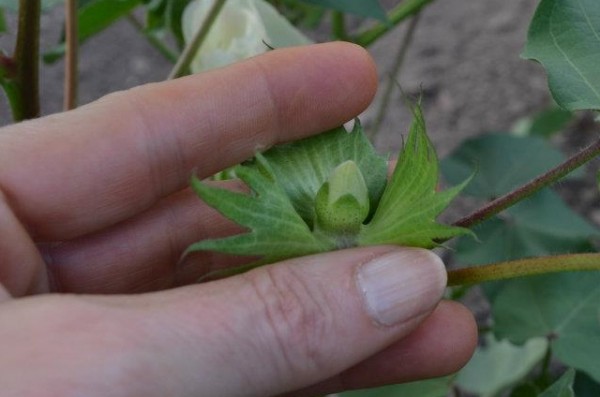
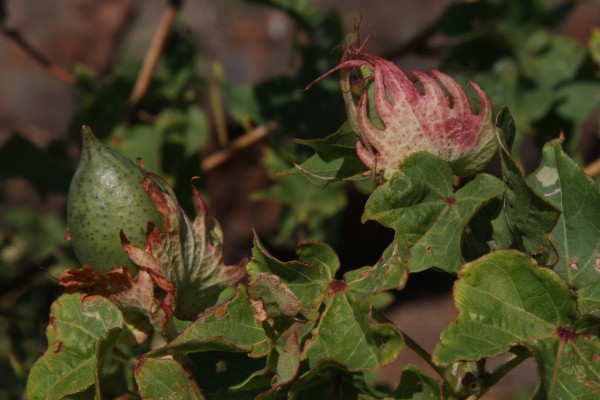
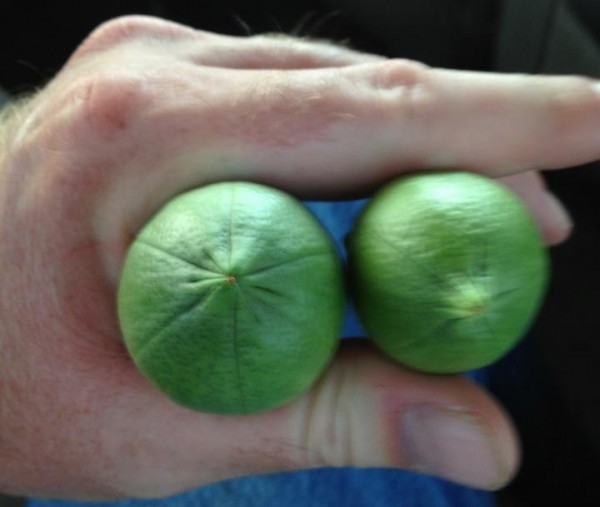
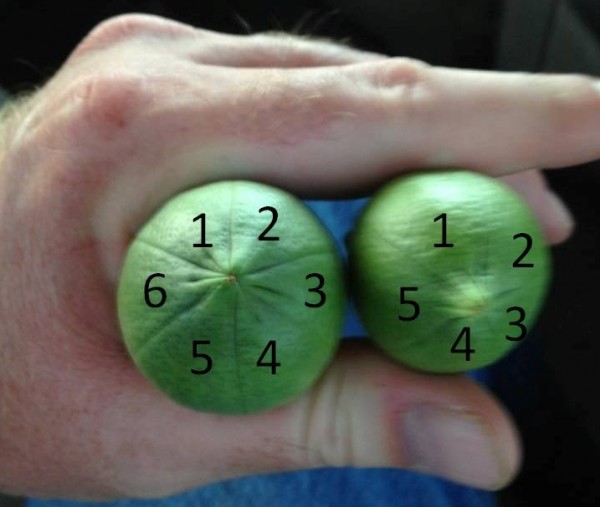
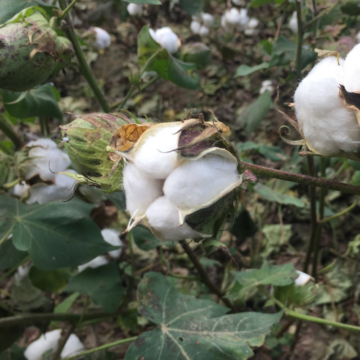




Been waiting for this blog ever since you posted the pic. Plants are amazing aren’t they? Thanks for the info JP, beautifully explained. 🙂
Thanks Alyse!
Out here in West Central Texas, our cotton is going into bloom 6 to 7 nodes above white flower (NAWF in Cotton Talk.) Ideally, it would be better going into bloom at 7 to 8 NAWF. The first 3 weeks of fruiting determines 80% or more of the final yield, so we need to keep the little thunderstorms coming to keep the plant stress relieved and stop the plant form reaching cut-out prematurely.
Agreed! I’m keeping you guys and rain clouds in my thoughts…. seem rain cloud prayers are really common this year across so much of the U.S.
Is cotton a drought type crop, JP? Does it ideally need more moisture than corn or less? For some reason I always think of cotton as a dry land/area type crop. Don’t ask me why.
Very educational post.
It is a plant that puts down a really long tap root. Needs water for sure and grows well in dry climates where it really needs water but because it can take some drought stress, its grown in lots of rain-fed areas without putting in irrigation. On a year like this though, folks wish they had the ability to water!
Thanks Janice,
I learned a few things I didn’t know about cotton and found it fascinating. I didn’t know about locks and bolls. Living in Oklahoma I know that cotton isn’t looking to promising here now that we are in another year of drought. I was born and raised here (moved away for awhile but life brought me home) and can honestly say in my 42 years I have never seen some of the dust storms I have seen in the last full year. The sky literally turns red and it seems as if darkness has descended on us. Hopefully, it will get better and the farmers here will wind up with some good crops soon!
Aaron